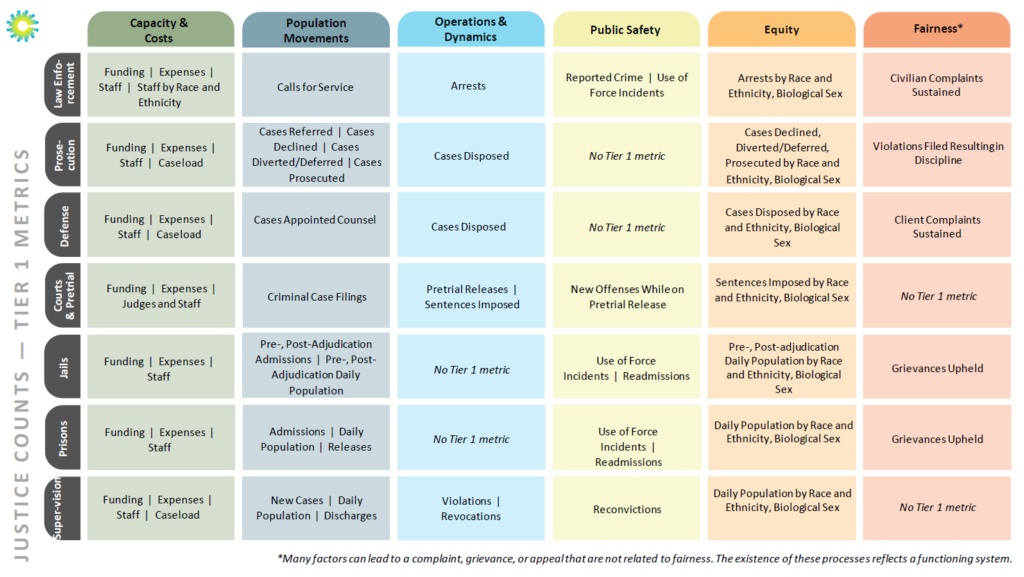Justice Counts Metrics
Justice Counts aims to leverage data that agencies across the nation agree are essential and get them into the hands of policymakers to support more informed decision-making.
The Justice Counts metrics provide policymakers and the public with timely, wide-ranging information on their criminal justice system that they have previously been unable to access. These metrics were developed by a national coalition of criminal justice experts across each of these sectors: law enforcement, prosecution, defense, pretrial/courts, jails, prisons, and community supervision. More than 100 people, agencies, and entities worked to balance a complex range of issues in developing and refining the metrics through seven sector-focused subcommittees.
The metrics are designed to be:
Simple
The metrics capture key data points while also accounting for the fact that agencies collect, define, and maintain data in different ways and that data quality may vary by agency or metric.
Feasible
The metrics rely on data points that are commonly collected by agencies and should be easy to share. They take into account that baselines may vary across agencies and localities.
Effective
The metrics are easy to understand and will provide data that policymakers and agency leaders can utilize in their decision-making. While the metrics will capture trends and offer structured guidance for sharing data by agencies across the system for decision-makers to broadly compare and contrast, they also allow agencies to provide context behind the numbers to enable fair, accurate use of the data collected.
How These Metrics Will Make a Difference
Justice Counts metrics relay aggregate-level information from criminal justice agencies that shows trends and dynamics at key points in the system. These data provide policymakers with vital context for making policy and budget decisions and can help increase awareness of overall criminal justice trends and impacts.
The COVID-19 pandemic showed us that it is possible for government agencies to publish ongoing, recent data and that when they are accessible, policymakers will use those data to make better decisions. States need a sustainable way to access critical data, and Justice Counts provides both simple, feasible, and effective criminal justice metrics and the infrastructure to share them easily.
States must commit to making accurate, accessible, and actionable data a permanent reality across the criminal justice system—from law enforcement and prosecution to courts and prisons. Smarter criminal justice policy requires better data—data that are up to date, consistently available, and easy to understand and utilize. The Justice Counts metrics are designed to accomplish this by being feasible for criminal justice agency staff to implement and share and useful for policymakers to inform decisions that are more equitable, more cost-effective, and fairer.
Two Ways to See the Data
States that participate in the Justice Counts Founding States Program or the Implementation Grant Program will have their own state-specific dashboard that displays metrics shared by agencies in their state and provides state policymakers and stakeholders with easy-to-understand data visualizations that will give both a detailed look and a high-level overview of their state’s criminal justice system. In addition, Justice Counts will aggregate the data shared from each state into a national dashboard that provides cross-system insights.

State-Specific Dashboard

National Dashboard
